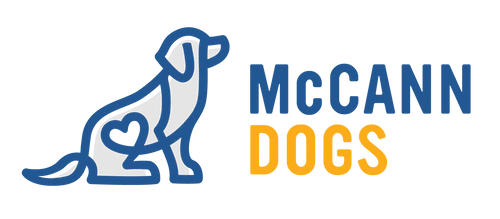The world needs more ACRONYMS, don't you think?!
I always find them helpful for remembering ordered steps, so coming up with one to help dog owner STOP unwanted behaviour was important. Conveniently, the only things you'll ever need to know to address an average unwanted behaviour, like pulling for example, are contained in the acronym S.T.O.P.
Let's talk about pulling on leash as an example of a behaviour you may not like.
How can you address it? Just S.T.O.P. it! It really is that simple.
S - Stop rehearsal.
The best way to make a behaviour solid is to rehearse it. This is true of both behaviours we want (like walking politely) and behaviours we don't want (like pulling). Rehearsal predicts behaviour!
This means that if pulling is what's practised, it will become the norm and the habit.
The first thing you need to do to change anything you don't like is prevent your dog from rehearsing that 'thing'. The more your dog pulls, the more pulling becomes natural.
In the example of pulling, preventing reheasal might be accomplished with an interim training aid like a Gentle Leader head halter. Avoiding pulling all together with your dog while you train a new behaviour is not practical or realistic, so a tool that will help is worth its weight in gold. We have not found a no-pull harness that we are comfortable recommending, but we love the Gentle Leader Head Halter for this application.
This is a great tool that will give you more control and help you gently prevent pulling. It's NOT our intention to have this tool fix the problem. You'll still need to teach your dog not to pull, but it will help prevent the rehearsal of pulling in the interim. This is especially helpful if you have a strong dog who likes to pull to care for.
T - Train the RIGHT behaviour.
This is the key to replacing the wrong behaviour. It's not enough to simply say, don't pull - we need to replace pulling with a more desirable option. We teach 2 styles of walking in our programs.
Let's go means walk at my side and maintain a loose leash. We teach this with luring, games and strategic rewarding. We want to ensure our dogs can tuck into our side and walk nicely for any duration of walk. It's a traditional 'heel' exercise that's best used in busier areas, like neighbourhood walks on sidewalk or when navigating areas that are full of distactions where you will want to keep your dog close.
Leash respect is what we teach for the REST of the time. It just means keep a loose leash. We actually make this an implied command where eventually, we expect our dogs to take responsibility for maintaining a loose leash at all times.
Both are GREAT options to replace pulling and all bases are generally covered by one or the other. Headed out for a walk and need to lock the door? Use leash respect. Have to pick up after your dog? This is a handy space to have good leash respect. Walking through the neighbourhood? Use Let's Go!
Once you've trained an alternative behaviour, you can use it to continue to address pulling.
O - One Challenge at a Time.
Now start to add challenges!
Training efforst often fail because we overestimate our dog's ability to contend with distractions. When they find themselves over faced by people and dogs and smells, pulling is likely to happen. What's worse is we might not have the tools to stop it when the distractions are that high. That's why we try our best to control the environment when we're training.
Your first lessons of new behaviour should be done without any competing motivators - meaning, there shouldn't be distractions that might throw your dog off their game just yet! Once they know how to walk nicely in a 'white room', it's time to add challenges that they'll face in the real world. Add one thing at a time so as not to over face the dog.
You'll need to wean away from food lures, add distractions and change environment. Focus on one challenge at a time so you can build on success
P - Proof
This is my favourite part!
This is the part where we get to cement our dog's understanding of their new skill. Proofing is setting up challenges to test where your dog's understanding sits. It's an amazing way of helping to build your dogs confidence in performing the skill. Through repetition of small challenges to overcome, you can quickly build your dog's ability to tune in to the new expectation.
For example, once they can heel in the quiet room, add a small distraction. The level of distraction will be dependent on your dog. One dog might find a toy in the corner to be nothing of interest while another might be drooling to get to it.
With an appropriate distraction in place, keep your criteria high and keep training. Reinforcing with HIGH value rewards AFTER your dog has made the RIGHT choice will go a long way to solidifying skills. The more you can proof successfully, the better chance your dog will have to understand their job.
Temper the distractions to your dog and keep building on their abilities until you can test your new skill with any novel distraction and your dog can ROCK IT!
Until next time, happy training!
Shannon

